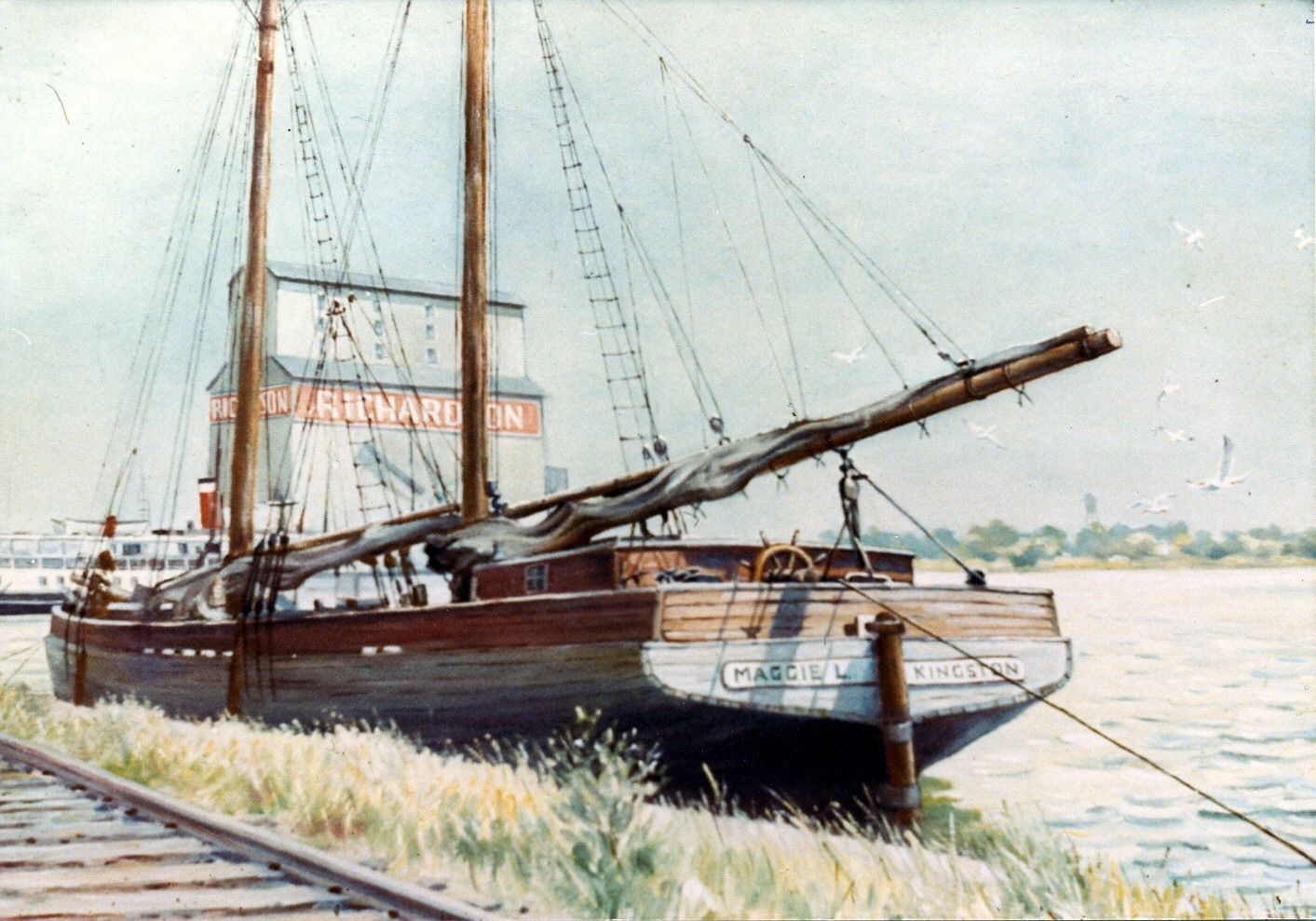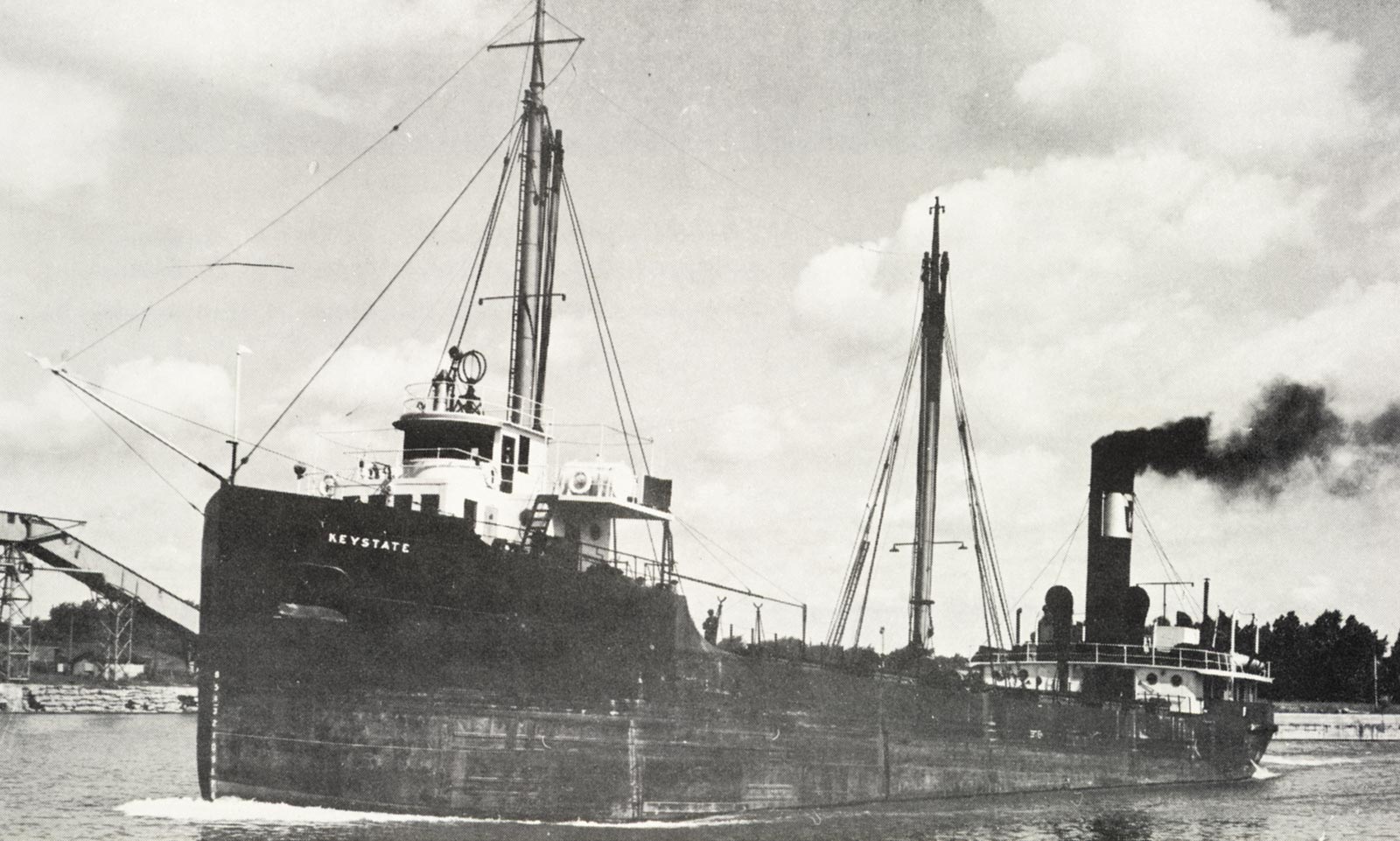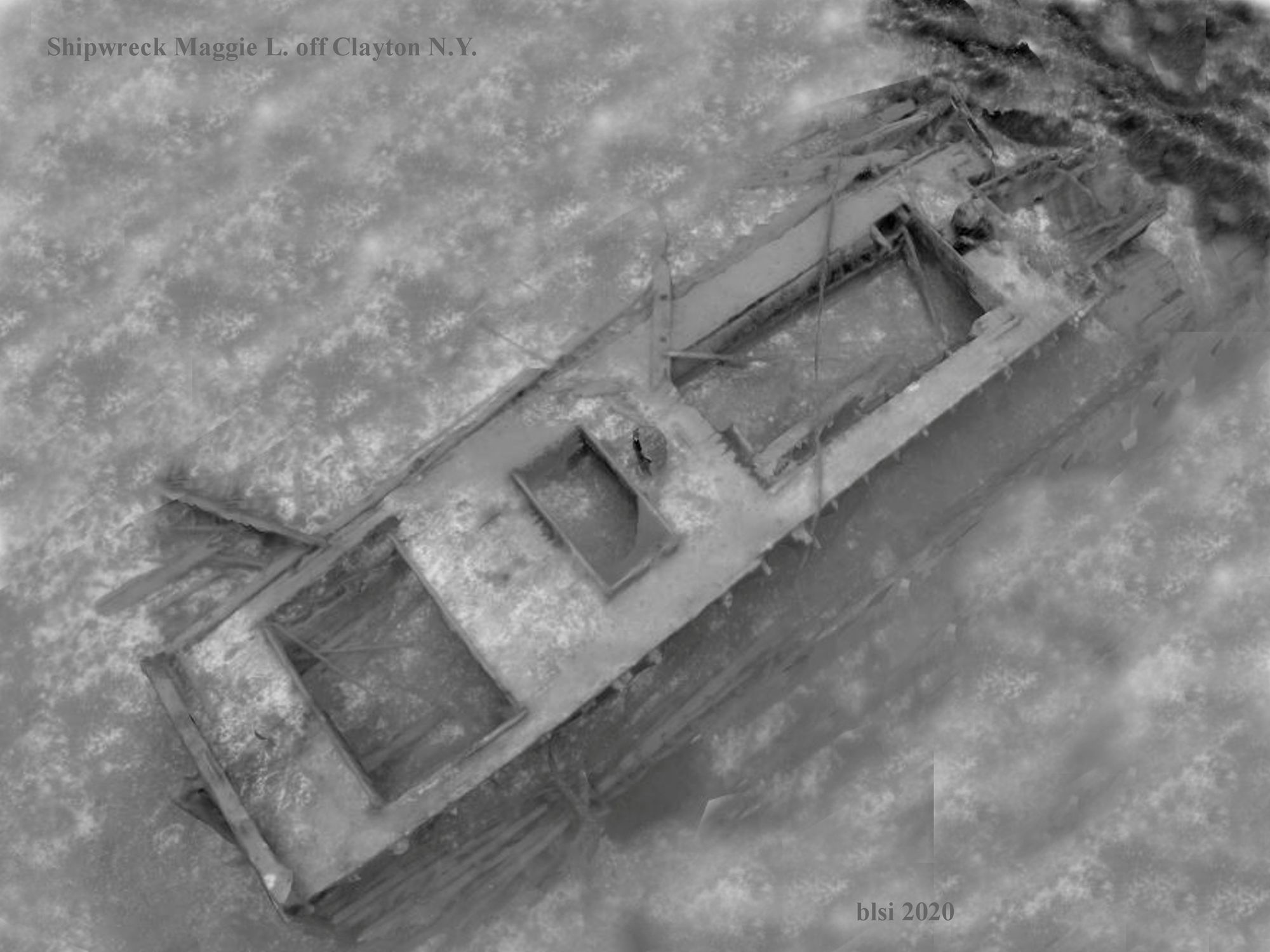Captain Merton H. Mellon was at the helm of his small two-masted schooner, the Maggie L., sailing down the St. Lawrence River on the night of November 1, 1929. He was headed to Clayton to pick up a load of coal at the Consaul-Hall dock and then deliver it to a customer on Wolf Island.
Mellon, of Bath, Ontario, had a good wind and while approaching the docks at Clayton sighted the steamer Keystate coming upriver on his starboard side. There was no time to get out of its way. When almost abreast of the Maggie L., the vessels collided. The bow of the schooner was sheared off. The 48 gross ton wooden schooner was no match for the 1,700-ton steamer, which sliced through the 40-year-old wooden boat like a knife through a stick of butter.

A detailed account of the circumstances surrounding this collision appeared in the Montreal Gazette on November 20, 1929. A hearing was held in that city at the office of Captain L. A. Demmers, the Dominion Wreck Commissioner. The article states:
“According to evidence adduced yesterday morning and afternoon, the Keystate was upward bound with a cargo of scrap iron, while the Maggie L. was descending the River. The accident occurred at six o’clock in the evening, and the sailing vessel sank shortly afterwards without the loss of any lives. Following this casualty, the Keystate offered assistance and then proceeded to Clayton for examination.”
“During the course of his examination, the owner of the Maggie L., Merton H. Mellon, explained that his schooner was sailing down the stream with a side wind when the Keystate was sighted ahead, coming up the River on his starboard side. On coming almost abreast of the smaller craft, the Keystate was alleged to have pulled right across the bow of the Maggie L., tearing her forward part right off. As a result of the inrush of water, the schooner sank.”

“In rendering his testimony, Captain Edward James Smith, of the Keystate, told the Court that the accident occurred at six o’clock on the night of November 1st, and that his ship was struck on the bluff of her port bow by the schooner Maggie L. Just previous to the collision, the Maggie L. was seen to be showing only one white light, which was very dim and had the appearance of being a stern light. It was not exposed and at times was hidden from view completely.”
“The log of the Keystate, which was read into the court records, explained that a small white light, which was taken for that of a small boat, was observed ahead when the steamer was almost abreast of Clayton. One blast on the whistle was been given and the course was altered to starboard.”
“As the two vessels drew together, the light of the approaching craft was seen to be closing in on the port bow. The helm was put over hard to port, and a sailing vessel struck the Keystate on her port bow. No side lights were seen on the schooner. The steamer followed the sailing ship to shore, near which the Maggie L. sank, shortly after the collision. There was no loss of life, and no damaged was sustained by the Keystate.”
“Francis King, K.C., of Kingston, represented the owners of the Maggie L., while L. C. Hinslea acted as counsel for the owners of the Keystate.”
Captain Mellon said he would not attempt to raise the boat, the cost of such an operation exceeding the vessel’s value of $2,000. There were reports the vessel would be blown up with dynamite as it posed a menace to navigation in its location mid-channel. The hull itself posed no navigation problem but it appears the masts were removed.
The demise of the Maggie L. left only two commercial schooners on Lake Ontario – the Lyman M. Davis and the Julia B. Merrill, also used in the coal trade and owned in Canada. But they, too, would soon disappear – burned as public spectacles during Dominion Day celebrations in Toronto.

[Author's Note: the author expresses his appreciation for the assistance of Dennis McCarthy in preparing this article. Dennis McCarthy is a well-known Cape Vincent diver and author of several books on diving in the St. Lawrence River.]
Additional Sources:
"Collision, Schooner Sinks" ,Lowville (N.Y.) Republican Journal, November 4, 1929
"Clear Channel By Blasting", Syracuse Journal, November 2, 1929
Maritimehistoryofthegreatlakes.ca
Shipwreckworld.com
St. Lawrence River Historical Foundation Inc.
website: http://www.srhf.info/p/maggie-l.html
"Scanner" publication of the Toronto Marine Historical Society, various issues
By Richard R. Palmer
Richard Palmer is a retired newspaper editor and reporter, and he was well known for his weekly historical columns for the “Oswego Palladium-Times,” called "On the Waterfront." His first article for TI Life was written in January 2015, and since then, he has written a dozen-plus others. He is a voracious researcher, and TI Life readers benefit from his interests.
Posted in: Volume 18, Issue 1, January 2023, History
Please click here if you are unable to post your comment.
